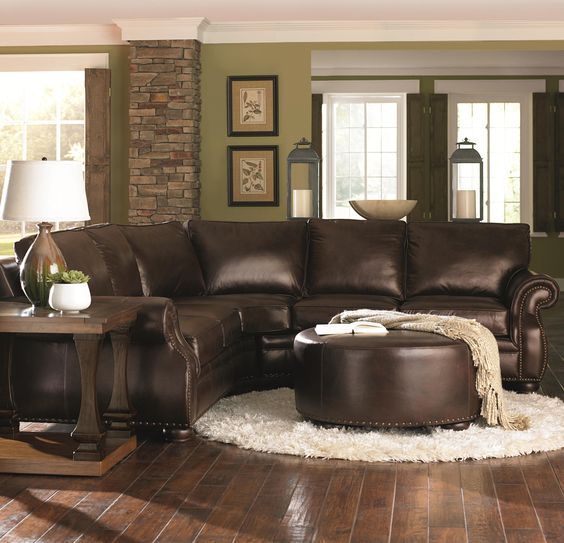How to restore wrought iron railings
Wrought Iron Railings Restoration Guide
10Jan
Admin2021-01-10T17:40:28-05:00
By Admin Blog 0 Comments
Wrought iron is a very resilient and long-lasting material and any fencing, stairs or railings that are made using this material can last for a number of years, with careful and regular maintenance. However, if you aren’t careful, the wrought iron railings can get affected by rust, which will impact its integrity and appearance.
Fortunately, this metal can be restored to its original appearance; using the right techniques and tools can also protect your wrought iron railings from future damage. Here is a basic restoration guide:
- Remove all the old paint and rust- Remove all the peeling or loose paint with a paint scraper and scrub away old paint flakes and loose rust with a wire brush. Reach into all the intricate designs and tight spots to make sure all the rust has been removed.
Use a coarse-grit sandpaper to scrape off any remnants of paint and rust and to smoothen the surface of the railings and fence. Use fine steel wool to buff the entire railing and then rinse off all the remaining rust.
- Neutralize rust– While it’s important to remove all the loose rust from your wrought iron railings; it’s also crucial that you remove all the rust particles that aren’t easily visible to the naked eye. Mix a commercial-grade rust neutralizer as per the instructions on the packaging. Dip a wire brush into the solution & scrub the entire railing and fencing in a circular motion. You also have the option to use a 50-50 solution of lemon juice and vinegar to make sure the remaining rust particles are neutralized.
- Primer and paint– Paint all the surfaces of the railing and the fence with a coat of rust-inhibiting metal primer. Leave this to dry for a minimum of 4 hours; then apply 2 thick, rust-resistant coats of paint over the primer.
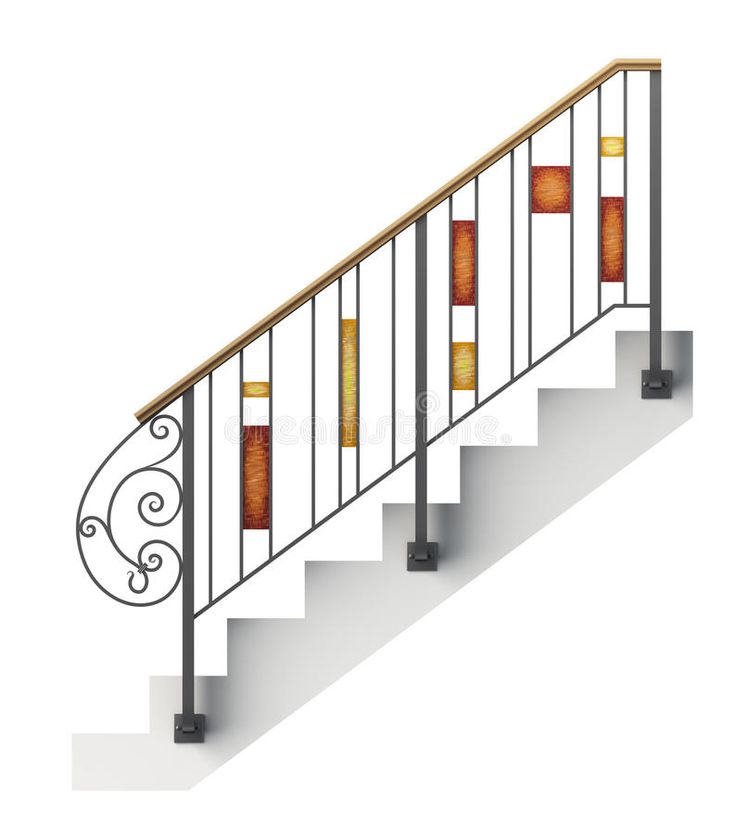 Make sure all the areas have been covered completely.
Make sure all the areas have been covered completely. - Maintain- Once all the rust has been removed and the fencing has been repaired, it’s crucial that you perform regular maintenance of your wrought iron railings. Wash the railing with diluted, soapy water at least twice a year. Use steel wool to buff away any scratches or the starting signs of rust; neutralize these with lemon juice & vinegar again. After neutralizing, touch-up al the areas that have been scratched, using rust-resistant paint.
For any more questions and enquires on wrought iron railings restoration, you can call Boston Ironworks at 617 657 3117. You can also fill in this contact us form. We’ll get in touch with you as soon as possible.
Copyright © Boston Ironworks
Author
Admin
Categories
- Blog
Latest Posts
About Us
Nulla nunc dui, tristique in semper vel, congue sed ligula. Nam dolor ligula, faucibus id sodales in, auctor fringilla libero. Nulla nunc dui, tristique in semper vel. Nam dolor ligula, faucibus id sodales in, auctor fringilla libero.
Nam dolor ligula, faucibus id sodales in, auctor fringilla libero. Nulla nunc dui, tristique in semper vel. Nam dolor ligula, faucibus id sodales in, auctor fringilla libero.
How to Refinish Your Wrought Iron Railing
There was a time where people were tearing out old wrought iron railings and replacing them with a more modern look, however, wrought iron is becoming one of the more desirable trends in the housing market currently. From intricate designs to classic iron poles, wrought iron is becoming a statement piece homeowners are looking for.
Purchasing Wrought Iron Railing
While purchasing an iron railing and installing it is always an option, oftentimes many homes still have the original wrought iron railings intact. In this scenario, you don’t need to purchase new railings, even if the current railings don’t look their best. Iron-based metals will always end up rusting and corroding if not cared for properly, so once you’ve refinished your railings, be sure to keep up on regular cleanings.
To maintain your railings, try cleaning them regularly, once a month is suggested in order to avoid any unwanted damage or rust. To clean your railings follow these simple steps:
- Step One: Dust the railings as best as you can
- Step Two: Mix water and dish soap and wipe/scrub all surfaces until a light bubble appears
- Step Three: Rise bubbles completely from railing and either dry with a towel, or let air dry. If there is a design that will hold standing water, be sure to dry these areas as air drying could cause premature rusting issues.
If you are wanting to touch up your railings with either a new coat of black paint, or even make your railings more of a statement piece by adding a pop of color, you will want to be sure you clean and prep your railings prior to painting. If your railings are rusted or chipped in specific areas, be sure to spend extra time prepping and cleaning. To paint your railings follow these prep steps:
- Step One: Scrape off all paint chips that are loose and flaking.
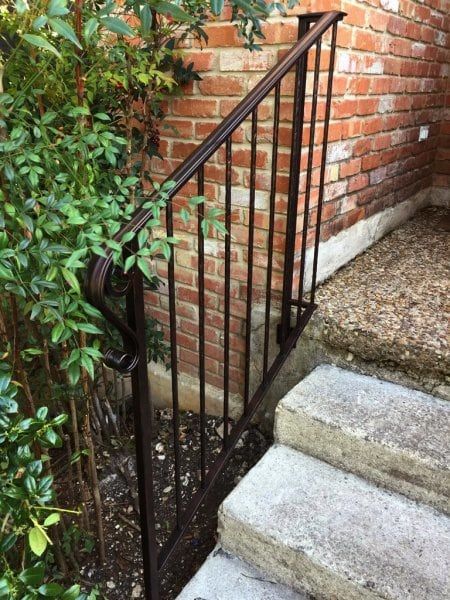
- Step Two: Use a wire brush to remove remaining peeling paint from all surfaces including any intricate design features, spend extra time on rusted areas.
- Step Three: Use heavy grit sandpaper to give one last hard scuff to the railings spending extra time on any remaining rust or damaged surfaces.
- Step Four: Follow the General Cleaning steps to finish your prep work. Be sure you sweep up any paint or dust that has settled from your prep work before moving on to paint!
Related: Preparing Your Home Before the Painters Come
Now that your railings are clean and prepped, make sure to move onto the painting process as soon as possible so that your railings aren’t left exposed longer than necessary. Start with a rust-proofing primer and then finish your painting with a minimum of two coats of enamel paint, the more durable the better, be sure to look into all the options available to you!
If needed, always err on the side of caution and do multiple thin coats as lighter coats will give off a better-finished look than one heavy coat. Another option would be to use spray paint, this is especially popular when your iron has a lot of intricate details. Allow your paint to dry fully before using the railings or doing any additional cleaning or vacuuming in the area as any dust from cleaning could cling to the wet paint and ruin your work.
Another option would be to use spray paint, this is especially popular when your iron has a lot of intricate details. Allow your paint to dry fully before using the railings or doing any additional cleaning or vacuuming in the area as any dust from cleaning could cling to the wet paint and ruin your work.
Read More: Home Improvement Ideas for Summer
Now that you have beautifully finished new railings, all that’s left to do is enjoy your new statement piece! For more tips and tricks on home improvement projects, or to set up a consultation for your next project, contact us at any time!
Related: Consider a Custom Deck to Increase Your Home’s Value
More: 5 Tips for Creating the Perfect Outdoor Place
Restoration of forged products: types and features
Restoration of forged products: types and features
Metal for the manufacture of forged products is durable, but changes occur with it over time. The appearance is affected by improper care, corrosion and mechanical damage. These factors worsen the condition of the forged product or may even destroy it. Therefore, the owners give forged interior items for restoration.
These factors worsen the condition of the forged product or may even destroy it. Therefore, the owners give forged interior items for restoration.
When metal products suffer surface damage or lacquer wear, they must be resurfaced. For this purpose, sandblasting, priming, patination and re-staining are used.
Sandblasting is needed to rid forged products of various contaminants. In this way, layers of old paint and rust are removed in the most inaccessible places. As a result of such processing, the metal should remain without foreign materials.
Forged items are protected from rust by cold galvanizing. In this case, the product is covered with brushes or a roller with a substance with a high zinc content. After this procedure, the object is painted in any color.
Protect against corrosion by oxidation, blackening and tinning. Oxidation is suitable for interior items: forged headboards, tables and chairs. The metal thing is well cleaned and degreased. Each side is heated to a certain temperature so that a thin film of iron oxide forms on the product. It provides rust protection. The heating temperature should be the same and the part is heated evenly so that the areas of one thing are not of different colors.
It provides rust protection. The heating temperature should be the same and the part is heated evenly so that the areas of one thing are not of different colors.
Vegetable oil is used for blackening. The metal is lubricated with it and heated at a temperature sufficient to decompose the liquid. It is necessary to closely monitor the heating process to prevent fire. The oil particles combine with the iron surface to form a black film. Forged product can be moistened in a solution of alkali or nitrate. For items that decorate the landscape, this method is not suitable.
To protect things from rust, decorating the exterior, carry out tinning. Its essence lies in the fact that the subject for a day is lowered into a solution with a high concentration of hydrochloric acid. After that, the product is washed with a liquid containing zinc and dipped in hot tin. As a result of such manipulations, a durable coating appears.
Damage occurs on individual elements of objects, so the restoration is partial. An exact copy of the part is made if a lot of damage is dealt that cannot be restored. The new element is installed in place of the old one. For the restoration of stairs, visors or railings, the whole structure is brought to the workshop.
An exact copy of the part is made if a lot of damage is dealt that cannot be restored. The new element is installed in place of the old one. For the restoration of stairs, visors or railings, the whole structure is brought to the workshop.
Large-scale restoration work on the restoration of the facade of buildings, park sculptures, squares and ancient interiors means a complete reconstruction of forged things. For each case, an individual decision is made. Restoration begins with a sketch made from a photo or drawing, which repeats the detail to the smallest detail. The actual dimensions and proportionality of the elements are taken into account. According to the finished drawing, they begin to forge the item. The product is painted, covered with patina and amenable to other processing to obtain the maximum resemblance to the original. Such restoration is carried out for any items: railings, visors, fences, gratings and other structures. Restoration requires high professionalism, creative ideas and increased attention to every detail.
The market for the restoration of forged objects is dominated by the following services:
1. Reconstruction of a single part or complete restoration of antique objects and forged elements.
2. Reconstruction of facades and street structures - fences, gratings, entrance elements.
3. Removal of small imperfections: patina coating, painting, cold galvanizing, priming and other processing.
4. Repair work with forged parts.
Restoration of forged products
Kuznya 47 manufactures for its customers a range of unique forged products that meet their wishes. In addition, we carry out the restoration of forged products, regardless of their complexity, made in different periods.
Despite the increased strength and durability of the metal, forged products can be subject to various damages. Trouble can happen with fine fine ornamentation or remarkable patterns, landscape decorations or interior elements. In any situation, one should not draw unambiguous conclusions. By trusting our forging masters, you will be able to save the product dear to your family under any unforeseen circumstances.
By trusting our forging masters, you will be able to save the product dear to your family under any unforeseen circumstances.
Our workshop boasts a team of experienced craftsmen who are ready to carry out the repair of forged products at your request. We work with antique, time-worn pieces of art in need of urgent rehabilitation, as well as with more modern products.
In our company, it is possible to order the restoration of forged products in case of deformation of the structure, which occurred, for example, due to a tree that fell on the fence. When decorating such fences or fences with elegant antique ornaments of historical significance, restoration will be the only right decision. Restoration is indispensable in the event of the loss of individual elements that need to be restored by true professionals.
Corrosion can also deteriorate the appearance of products over time. The same applies to peeling paint, losing its external condition and even completely collapsing. It is also possible to cope with the destructive corrosion process and provide further protection against it, thanks to our restorers.
It is also possible to cope with the destructive corrosion process and provide further protection against it, thanks to our restorers.
The replacement of damaged forgings is part of our business. We are ready to engage in high-quality and prompt replacement of various decorative interior elements, objects of historical value.
Process complexity
Restoration of forged products consists of several stages. It should be understood that this procedure is a very serious intervention, consisting of several stages. Only forging masters are able to achieve a full return to the original appearance. In order to perform this work, it is necessary to have a variety of knowledge related to the methods of conservation of metal products, styles and designs, certain properties of materials.
When carrying out competent, thorough work, our specialist will be able to provide the client with a completely new forged product that has completely preserved its original appearance.
Learn more
- Office interior paint colors

- Best time to harvest tomatoes

- Best smell for home

- Best temperature to grill steak

- What is the best color for an office

- Sectional in long narrow living room

- Downstairs cloakroom ideas
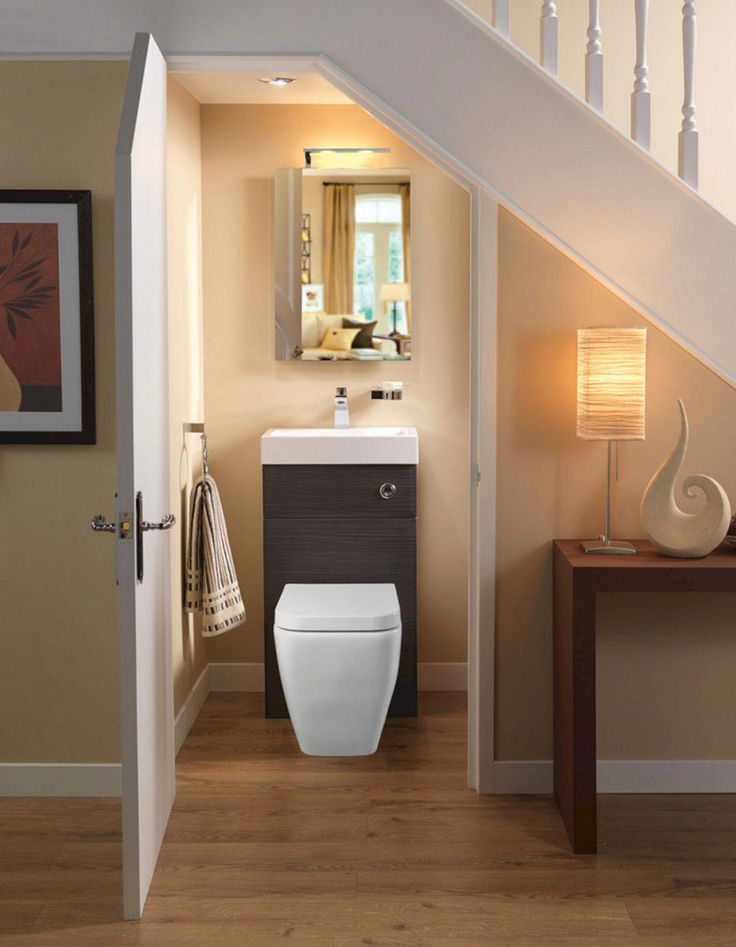
- What is the fastest growing hedge
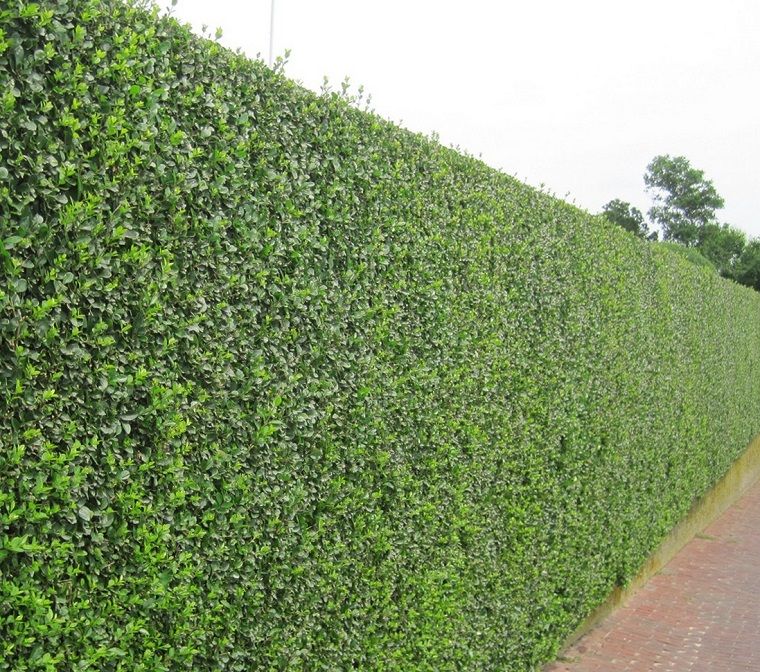
- Leather furniture renewal
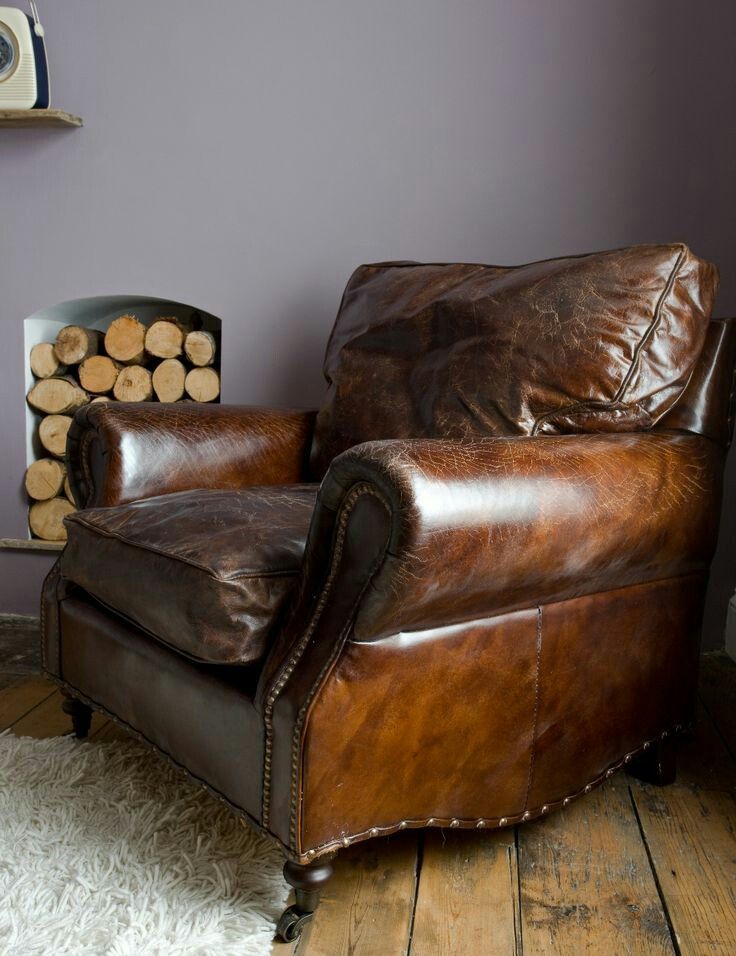
- Large room lighting ideas

- Brown leather furniture living room ideas
